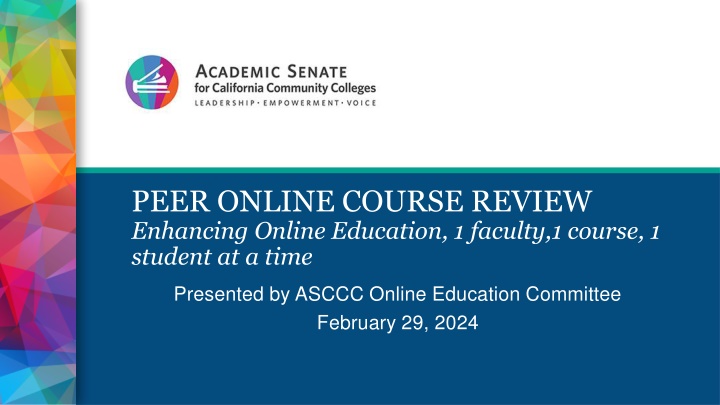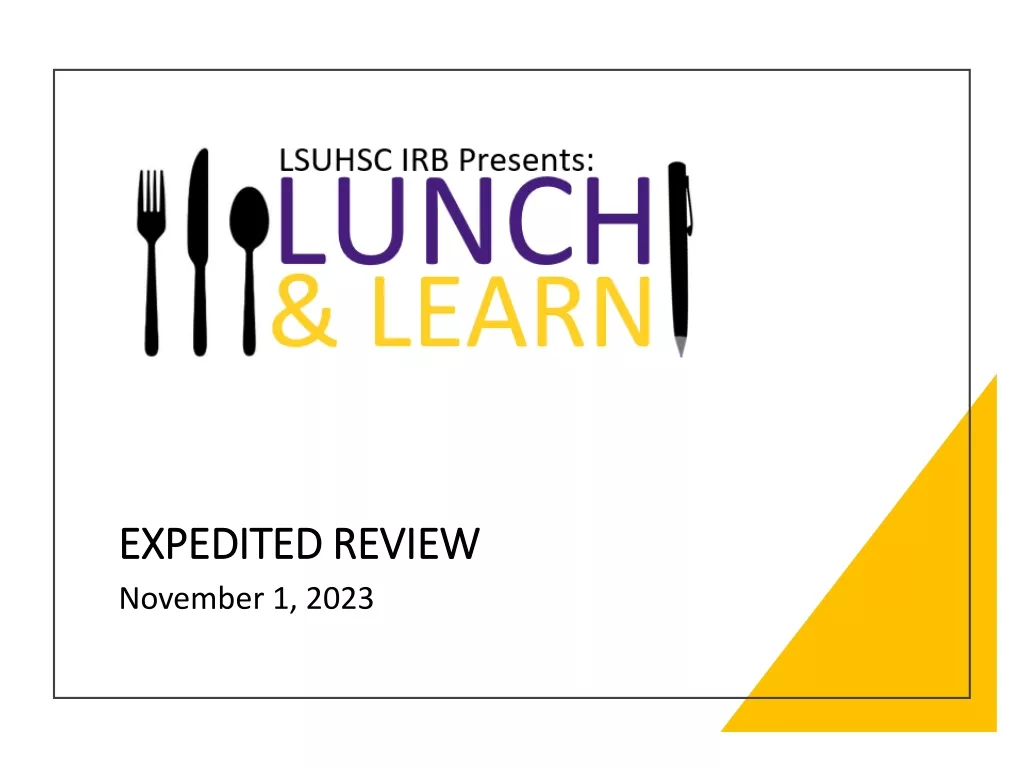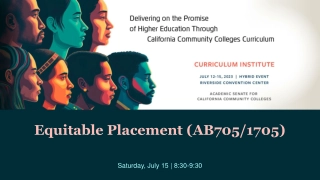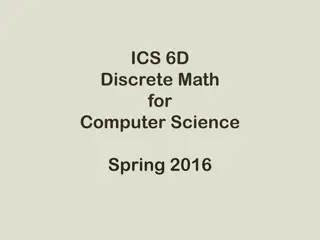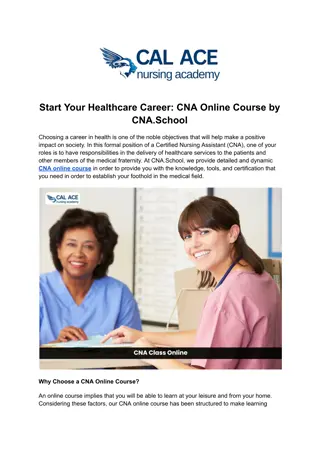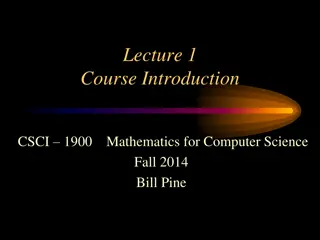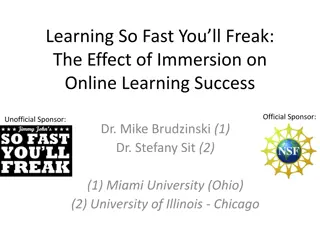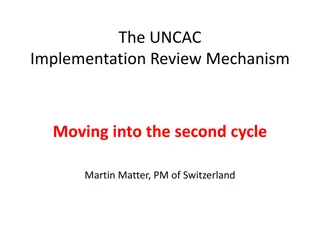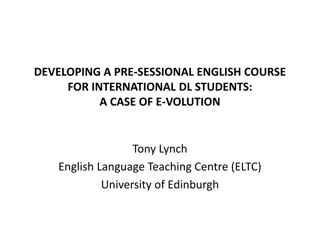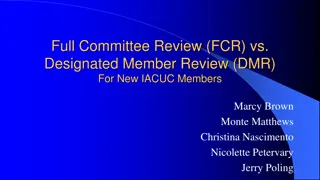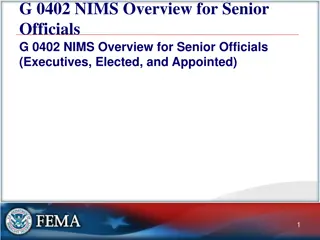Enhancing Online Education: ASCCC Online Course Review
Explore the ASCCC Online Course Review on Enhancing Online Education presented by the ASCCC Online Education Committee. Learn about the CVC-OEI Course Design Rubric and its impact on local peer online course review initiatives. Discover how the California Virtual Campus Online Education Initiative aims to improve access and success in high-quality online courses, and the importance of designing clear online course policies.
Download Presentation

Please find below an Image/Link to download the presentation.
The content on the website is provided AS IS for your information and personal use only. It may not be sold, licensed, or shared on other websites without obtaining consent from the author.If you encounter any issues during the download, it is possible that the publisher has removed the file from their server.
You are allowed to download the files provided on this website for personal or commercial use, subject to the condition that they are used lawfully. All files are the property of their respective owners.
The content on the website is provided AS IS for your information and personal use only. It may not be sold, licensed, or shared on other websites without obtaining consent from the author.
E N D
Presentation Transcript
PEER ONLINE COURSE REVIEW Enhancing Online Education, 1 faculty,1 course, 1 student at a time Presented by ASCCC Online Education Committee February 29, 2024
Carlos R. Guerrero, ASCCC South Rep. Online Education Committee Chair, LaTonya Parker, EdD, ASCCC Secretary, Online Education Second Chair Heather Kokorowski, Los Angeles Pierce College Wendy Bass, Los Angeles Pierce College Soraira Urquiza, EdD, Los Angeles City College Xochitl Tirado, CVC, Faculty Liaison-POCR Presenters 2
POCR, What is It? CVC OEI Rubric. CVC-OEI Course Design Rubric TOOL POCR Some Data Peralta College Online Equity Rubric Faculty Voices Agenda 3
encourage local academic senates, through their curriculum committees and online education committees, to adopt the CVC-OEI Course Design Rubric for local use to explore the development of local peer online course review recommend that local academic senates work with their colleges to develop a plan to identify resources so that faculty who wish to participate in local peer online course review may do so. ASCCC Resolution 9.03 Fall 2018 4
The California Virtual Campus Online Education Initiative (CVC-OEI) is a collaborative effort among California Community Colleges to ensure that significantly more students are able to complete their educational goals by increasing both access to and success in high-quality online courses. Background CVC-OEI 5
Identify and discuss federal and state regulations that impact online course policy and practice; Identify local support for online teachers and learners; Design introductory activities that support an online learning community; Develop clear and supportive online course policies. No Analytic Rubric No Peer Review Barebones, not enough Online Teaching and Learning (OTL) The Basics but not enough 6
The Online Education Initiative (OEI) Course Design Rubric (Rubric) contains the online course design standards developed and adopted by this initiative. The Rubric is intended to establish standards relating to course design, interaction and collaboration, assessment, learner support, and accessibility in order to ensure the provision of a high-quality learning environment that promotes student success and conforms to existing regulations. The OEI Course Design Rubric was developed in 2014 by the OEI Professional Development work group to ensure that all courses offered as part of the initiative promote student success and meet existing regulatory and accreditation requirements. It has undergone revisions and updates since then. Courses that are peer reviewed and aligned to the OEI Course Design Rubric: have met the CCC s highest level of design standards to support online student success and can be made available for cross enrollment to students at participating colleges. The Rubric is divided into four sections. Updated in 2020 The OEI Rubric Since 2014 Ten Years! 7
The rubric is the result of a collaboration between many CCC faculty. Before beginning the rubric, the committee looked at other rubrics from across the nation, including Quality Matters, the Online Learning Consortium Pillars, and the CSU's QOLT. Peer Online Course Review (POCR) Rubric Peer Review CVC OEI Rubric 4 key sections, A-D Peralta College, Section E, Online Equity. 8
SECTIONS A-D Section A: Content Presentation Section B: Interaction Section C: Assessment Section D: Accessibility The Rubric Four Key Sections Link to Rubric 9
SECTIONS A-C Section A: Content Presentation The 14 elements for quality course design in this section address how content is organized and accessed in the course management system. Key elements include course navigation, learning objectives, and access to student support information. Section B: Interaction The six elements in this section address instructor-initiated and student-initiated communication. Key elements of quality course design covered in this section include regular effective contact, both between and among instructors and students. Section C: Assessment The eight elements in this section address the variety and effectiveness of assessments within the course. Key elements include the alignment of objectives and assessments, the clarity of instructions for completing activities, and evidence of timely and regular feedback. The Rubric 2 Four Key Sections Link to Rubric 10
SECTION D Accessibility The 16 elements in this section are reviewed to determine if a student using assistive technologies will be able to access the instructor s course content as required by Section 508 of the Rehabilitation Act of 1973 (also known as 508 Compliance ). The accessibility elements in Section D focus on instructor-generated content that is primarily under the control of faculty when developing a course. Since Section D addresses elements that are required to be present, the elements in this section, when applicable, are only marked as Incomplete or Exchange Ready. The Rubric 3 Four Key Sections Link to Rubric 11
Peer Online Course Review (POCR) Benefits Benefits of adopting the Local Peer Online Course Review Process (POCR) Improve online student success rates Serve as an exciting and engaging professional development experience for online faculty. Lead to more engaging and satisfactory online experiences for both teachers and students Create a community of practice in which teachers share their challenges, develop new approaches, and support one another Result in more aligned "Quality Reviewed" courses from your college in the CVC Exchange 12
A college that is local POCR Certified is able to review their online courses and award a Quality Review (QR) badge to the course. QR badges appear on the CVC Exchange site. Local POCR Certification 13
Before you begin, Assemble POCR team Establish instructor prep POCR Capstone Initial Meeting POCR Team and CVC Lead meet Course Review 1 All reviewers reviews course Local norming session Feedback/alignment Course Review 2 Reviewers work in pairs to review course Local norming session Feedback/alignment Course Review 3 Review course using college s adopted process Local norming session Feedback/alignment Local POCR Certification Process 14
Los Angeles Pierce College Heather Kokorowski, POCR Lead Wendy Bass, DE Coordinator Expanding Access to Quality Education through POCR 15
1. Advertise: email faculty, share POCR website, present to committees 2. Create MasterShells & add to self- paced Pierce POCR Prep Course 3 to 5 hours of solid preparation Includes video tutorials on accessibility and recorded webinars on Course Review Prep Form, set up as graded video quizzes Shared on the Canvas Commons 3. Work with faculty as they get their class ready for review 4. Use Google Sheet to track reviewer availability and review status Los Angeles Pierce College 2 Heather Kokorowski, POCR Lead Wendy Bass, DE Coordinator 16
POCR Lead previews classes and assigns a review team Work in teams of two, generally divide and conquer Resources for reviewers provided in LAPC POCR Resources shell in Canvas Use Course Design Tracker 2.0 (modified from Michael Robertson, LBCC) Review team completes the initial review in 2-3 weeks, then continues to work with faculty to bring all items into alignment I conduct a final review to internally normalize our process and expectations 5. Los Angeles Pierce College 3 Heather Kokorowski, POCR Lead Wendy Bass, DE Coordinator 6. 7. 17
Recent Data A 2024 study by Pierce College revealed a 5% increase in course success rates after POCR alignment. Los Angeles Pierce College 4 Heather Kokorowski, POCR Lead Wendy Bass, DE Coordinator The greatest increases in success rates were among Asian (+8% increase), Black (+8% increase), and Hispanic (+10% increase) students, and students under 20 (+6% increase) and 20-24 (+10% increase) years of age. Increases of 4% to 25% were seen across all genders. 18
Los Angeles Pierce College 5 Heather Kokorowski, POCR Lead Wendy Bass, DE Coordinator 19
Soraira Urquiza, EdD, Assistant Professor of Chicana/o Studies, Los Angeles City College Faculty Testimonio Voice from the Faculty Heather Kokorowski, Los Angeles Pierce College, Associate Professor Earth Science Carlos Reyes Guerrero, Social Science Chair, Los Angeles City College 20
Peralta Equity Rubric, If you teach college courses in any format face-to-face, hybrid or online you probably have heard about or worked on improving course quality, course accessibility, or both. Online Equity Rubric Peralta College But what about course equity? At its core, equity is defined as "freedom from bias" (Equity, n.d.). In the Distance Education context, Peralta uses the term equity to mean "freedom from biases, assumptions and institutional barriers that negatively impact online learners' motivations, opportunities, or accomplishments." The table below outlines the research-based equity issues that a) affect online learners and b) form the basis of Peralta's Equity Rubric 21
Peralta Equity Rubric, If you teach college courses in any format face-to-face, hybrid or online you probably have heard about or worked on improving course quality, course accessibility, or both. Online Equity Rubric, Section E Peralta College Support IDEAA But what about course equity? At its core, equity is defined as "freedom from bias" (Equity, n.d.). In the Distance Education context, Peralta uses the term equity to mean "freedom from biases, assumptions and institutional barriers that negatively impact online learners' motivations, opportunities, or accomplishments." The table below outlines the research-based equity issues that a) affect online learners and b) form the basis of Peralta's Equity Rubric 22
Peralta Equity Rubric: Key Elements Online Equity Rubric, Section E 2 Peralta College Support IDEAA Link to Rubric E1 Technology E2 Student Resources and Support E3 Universal Design for Learning E4 - Diversity and Inclusion E5 Images and Representation E6 Human Bias E7 Content Meaning E8 Connection and Belonging 23
Links to Resources CVC OEI Rubric https://onlinenetworkofeducators.org/wp- content/uploads/2021/05/CVC_OEI_Course_Design_Rubric_rev_April_2020_ACC_52 021.pdf Thank you LA Pierce College https://sites.google.com/view/lapcpocr/home Copy of Course Design Tracker https://docs.google.com/document/d/15-ShyFoeFZ8znmS8_- oV_lKsSXIMwSp7xngyBnTRDRo/edit#heading=h.wtnfijilnyuv Peer Online Course Review https://onlinenetworkofeducators.org/course-design-academy/pocr-resources/ Local POCR Resource Center https://sites.google.com/cvc.edu/localpocrresourcecenter/home 24
